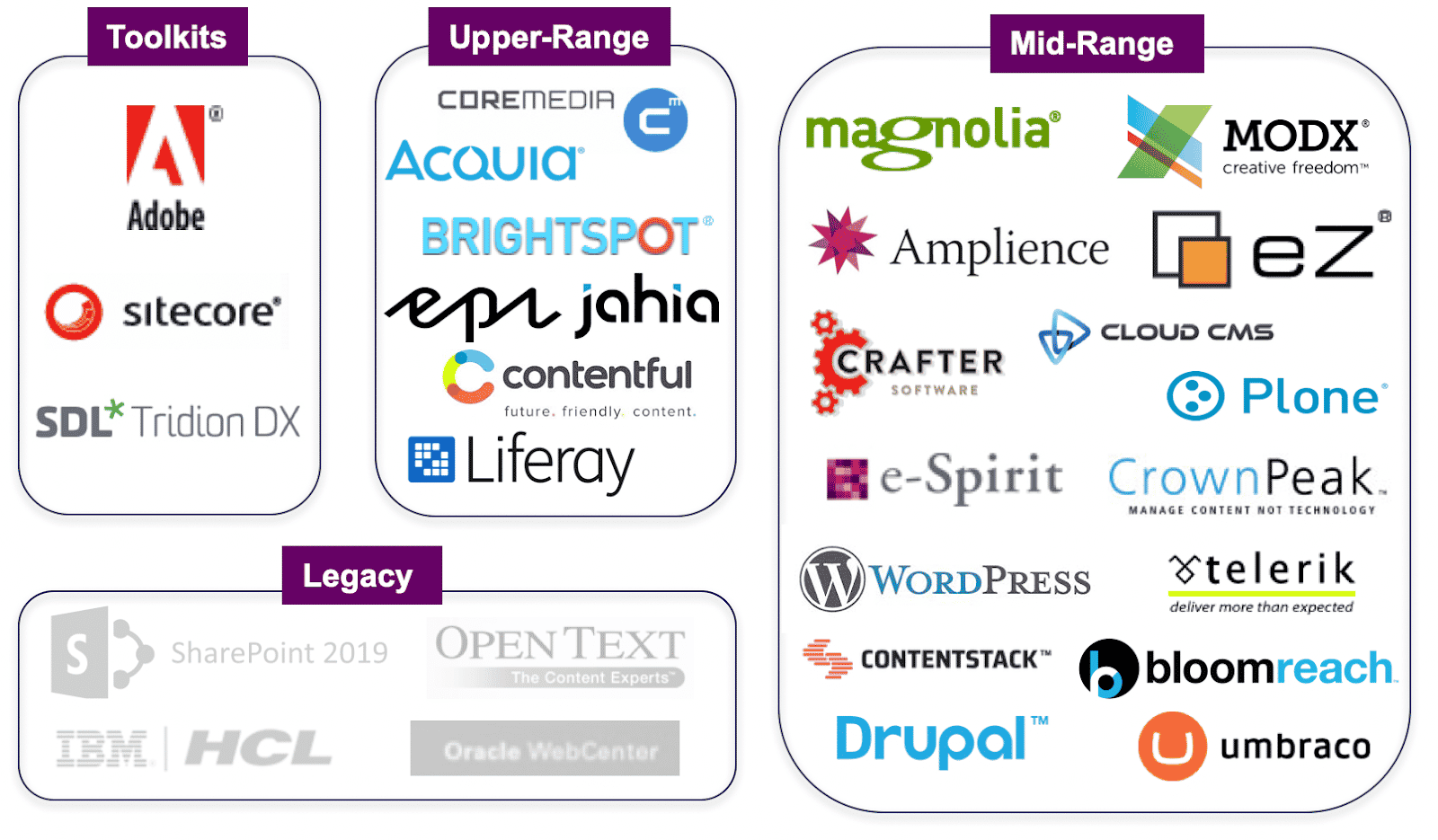Old-timers (like me!) in web content & experience management (WCM) will remember an early entrant called RedDot. Founded in Germany during the mid-1990’s, the platform originally had the somewhat prosaic label of “InfoOffice CMS.” Yet the plucky upstart boasted an important innovation: an in-context editorial interface showing the published page with the editable blocks marked off by a red dot 🔴that you would click to get a pop-up editorial window.
It was clever, maybe even revolutionary. The company changed its name from InfoOffice to RedDot Solutions and joined the numerous European WCM vendors which migrated to North America in the early 2000s.
But there was a problem. In-context editing was quickly mimicked by nearly all WCM competitors not named Drupal, and RedDot lost its unique selling point. After middling growth RedDot was acquired by document management vendor Hummingbird before making its way to the content management retirement community known as OpenText.
I recall one of my take-aways was: Never name your product after a feature.
What does this have to do with headless?
I’m going somewhere with this…really, I am.
Fast-forward a decade to the 2010s to find a new wave of (mostly) European WCM vendors emerging with another important innovation: Completely decoupling content management from content presentation and delivery. To be clear, separating content management from experience management wasn’t new. What made it a big deal this time was a tsunami of investment funding, a simple moniker (“headless”) and alignment with newer architectural models – all packaged into modern, cloud-native platform offerings.
Headless platforms were a fresh take on the problem of how to supply content to multiple different environments, especially the many new customer-facing web and mobile applications. Traditional WCM platforms didn’t do that very well, if at all. They managed your content and then served up your “website.” Not good enough.
The headless plateau
The people selecting the headless technology for a company are more likely to be IT than marketing. As a result, most vendors pitch themselves explicitly to them. This frequently doesn’t end well for business-facing tools, and indeed at Real Story Group we often see serious adoption problems with headless WCM platforms.
Here’s the challenge: Content managers spent more than a decade trying to win control over not just content authoring, but also experience management. Pushing the marketplace, they ultimately won capabilities like easily-modifiable template and page componentry, dynamic previews and self-service testing/personalization subsystems. With headless they lose all that. Appeals to “don’t worry your little self about what the content looks like” can feel condescending.
Want an anecdote? An architect at a large global firm had selected a well-known headless WCM vendor for a product marketing team’s public website. Unfortunately, his business stakeholders rejected it. Their business unit produced mostly long-form, top-of-the-funnel thought leadership, with content dictating quite arbitrary layout choices – which they wanted to control. The new headless platform favored short-form, “chunked” content with minimal preview, along with page assembly in a remote application they couldn’t touch. They rebelled.
When the architect called the headless vendor with his dilemma, the salesperson coached him to “teach his marketers about multi-channel publishing.” Well, that didn’t work. They just needed a simple way to produce micro-sites featuring rich articles, arbitrary page components and responsive design frameworks.
The future is hybrid
A modern enterprise, particularly a large one, needs to support multiple publishing models. Some are surely headless; e.g., sending marketing content to your ecommerce platform. Others are more coupled, for a variety of reasons. There’s a wide spectrum here. RSG frequently sees enterprises that made major commitments to headless solutions now having to support other WCM platforms as well.
Why not have both instead of either/or? Well, many (though not all) traditional WCM vendors have come a long way in making their platforms headless-enabled. These older systems are rightfully criticized for not being all the way there. But these hybrid platforms are gaining in the marketplace. Part of the reason is because they often embrace capabilities most “pure” headless vendors have eschewed. Things like multichannel preview (very hard, but very useful) or single page application editors.
Many headless vendors have put themselves in a box. Having embraced an architectural model with near religious fervor, they’re unable to adapt to a more ecumenical world. I’ve been privy to some internal discussions at headless vendors on these topics, and from afar it sounds like a debate between true believers and heretics.
WCM logo landscape on a complexity spectrum
In RSG’s WCM vendor evaluations, we categorize platforms primarily by complexity. Architectural models – along with business and license models – are important but still adjunct discriminators. So, as the diagram shows, we mix headless vendors in with other competitors. It’s tempting, though, to create a separate “headless” box, because those vendors do seem on a bit of island here.
I don’t know any WCM vendors that have actually renamed their platforms with “headless” in the title. But the lesson of RedDot remains apt. Headless is a feature, not a holistic solution. I believe the future lies with hybrid WCM platforms that can support a range of use cases.
Get the daily newsletter digital marketers rely on.
Opinions expressed in this article are those of the guest author and not necessarily MarTech. Staff authors are listed here.



















You must be logged in to post a comment Login